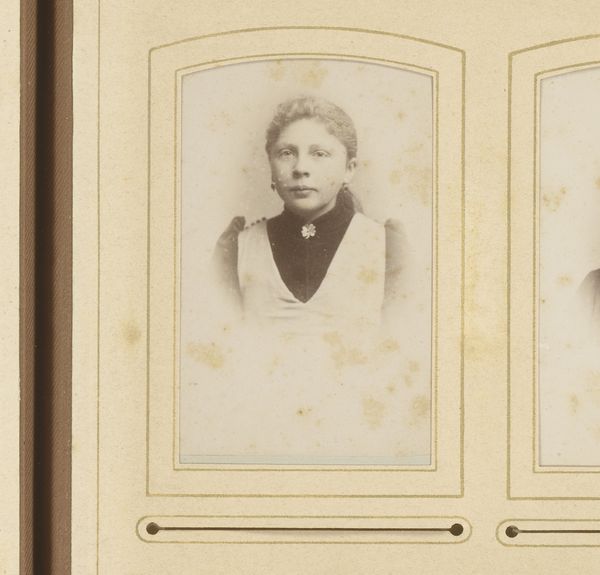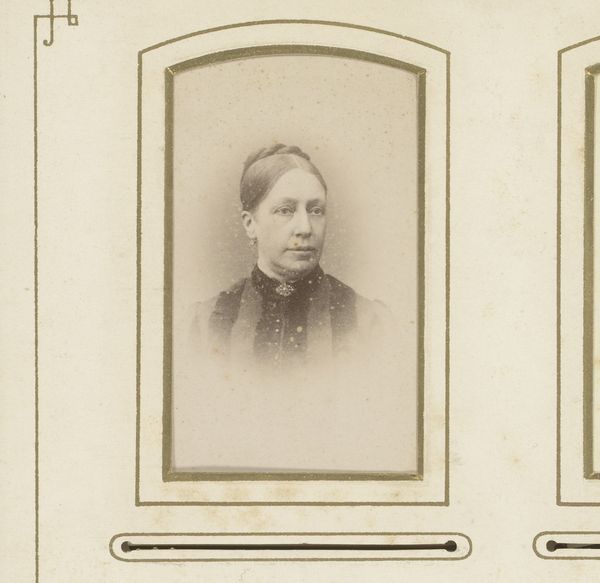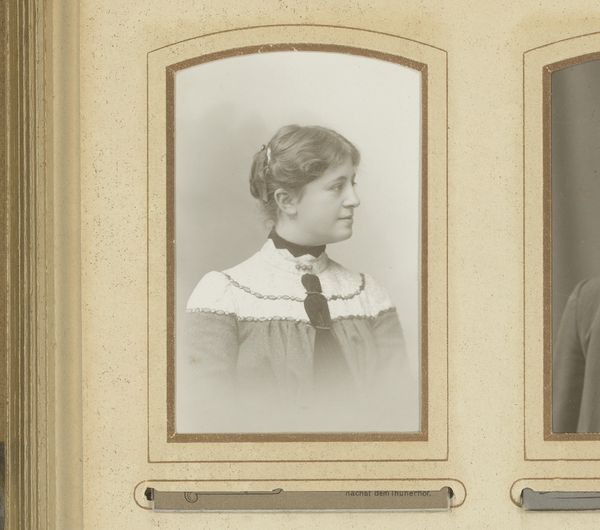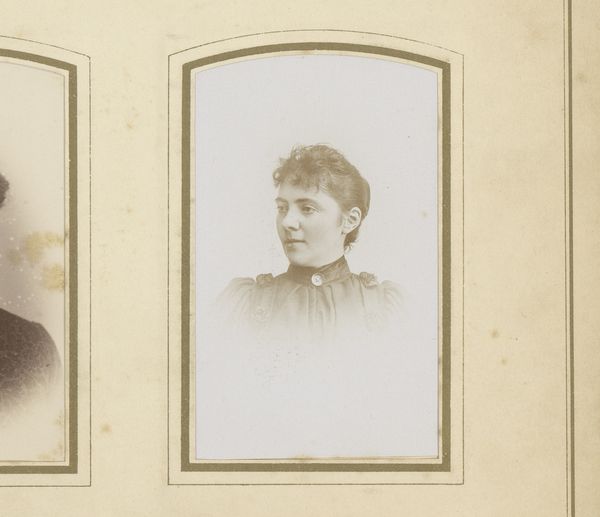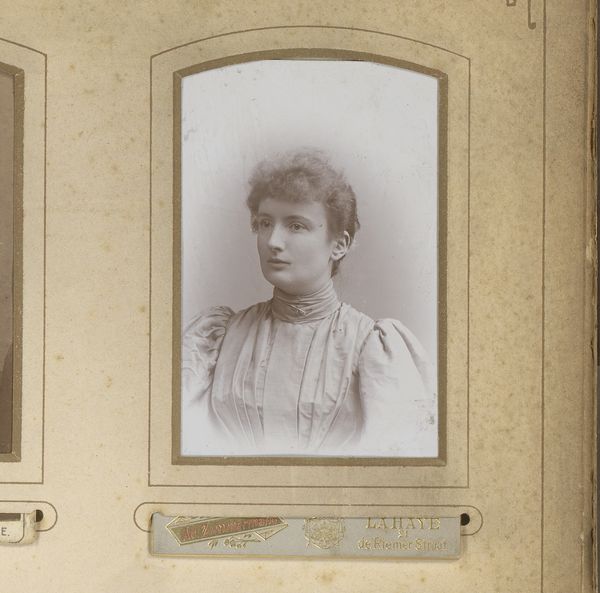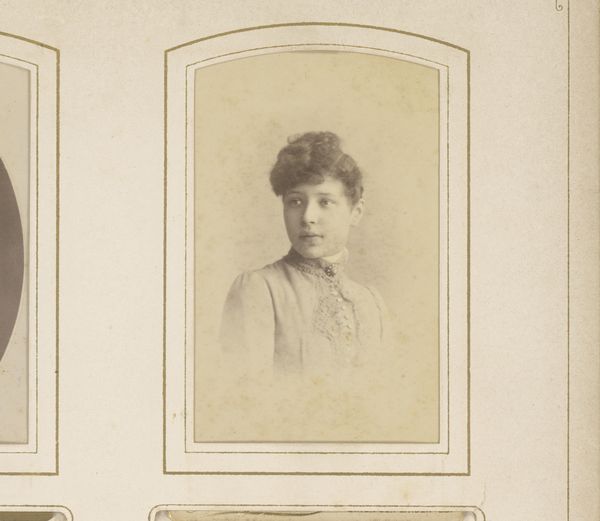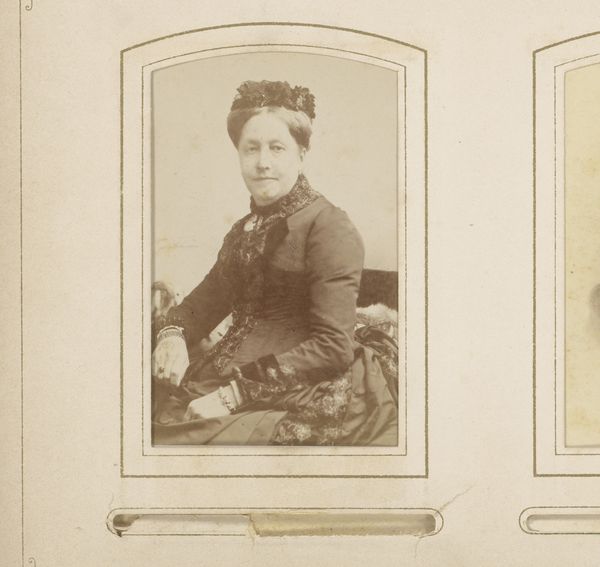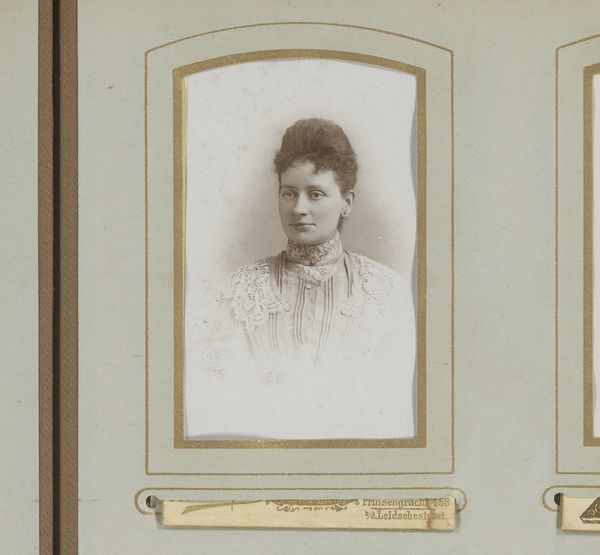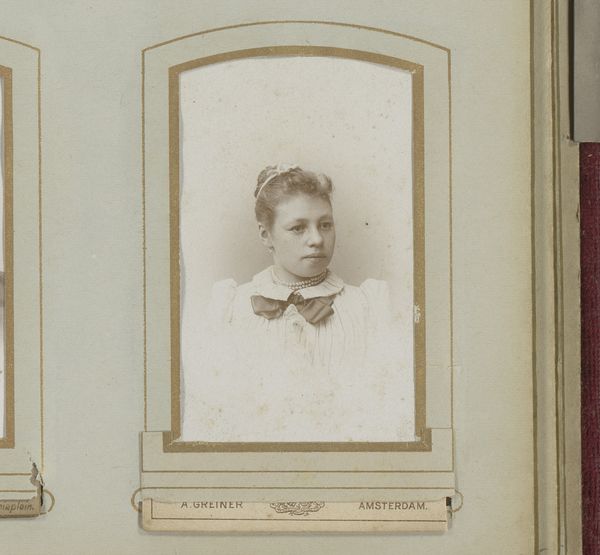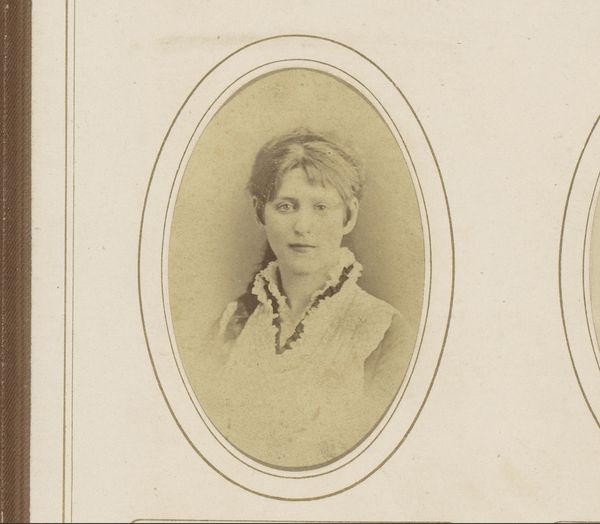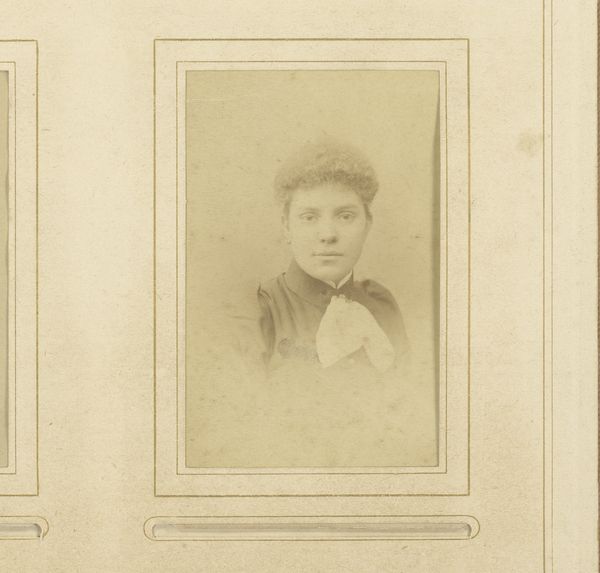
photography
#
portrait
#
photography
Dimensions: height 83 mm, width 53 mm
Copyright: Rijks Museum: Open Domain
Curator: Welcome. Before us is a photographic portrait, simply titled "Portret van een vrouw," or "Portrait of a Woman." It was created sometime between 1874 and 1887. It's currently held in the collection of the Rijksmuseum, and is attributed to Albert Greiner. Editor: There's a stillness to it. Almost a faded, sepia dream. The tight framing forces your attention on her face, and I think it does it successfully. It allows all of the details, despite the old process, to be crisp. The lines in the clothing, hair, etc. have definition that enhances the emotional power of her features. Curator: Yes, that dream-like quality you mention certainly stems from the photograph’s technical execution. Consider photography in the 1870s as a sort of alchemy between science and art, still in its relative infancy. Her composed, serious expression conveys something deeper. It makes me wonder what she felt in that moment—not only regarding the social expectation of formal portraits, but her private sentiments about love, life, and loss, during this historical period of immense change. Editor: It's interesting how that stillness almost demands you to fill in the story yourself. We naturally project a sense of knowing because portraits elicit the innate human need to create an image. It makes it real, gives us power. Yet what are we truly seeing? The photographic materials themselves, the tonal balance, and the framing construct a version, not necessarily the woman herself. I get caught on the surface, knowing her story is locked away from me. Curator: Indeed. Photographic portraits served a different cultural function then than they do today, and of course were often signifiers of status. This woman has clearly had a sitting made, perhaps with symbolic intentions such as memorializing beauty, family position, or personal narrative. Her elegant attire, the tight high neck and embellished bodice, speak volumes. As the technologies improved, photographic images could create immortality, while holding social and moral values, as well as personal statements, through very specific poses, symbolic garments and details in order to craft messages. Editor: Absolutely. When I look at this image as an object, a tangible artifact, the way that Greiner harnessed the medium has as much depth as the intention behind the picture. The very limitations of the process serve the meaning. Curator: Well, thinking about what survives and continues to engage across centuries is a fascinating process itself. Editor: Exactly. It becomes less about what *was*, but rather what remains—the art of looking closely.
Comments
No comments
Be the first to comment and join the conversation on the ultimate creative platform.
